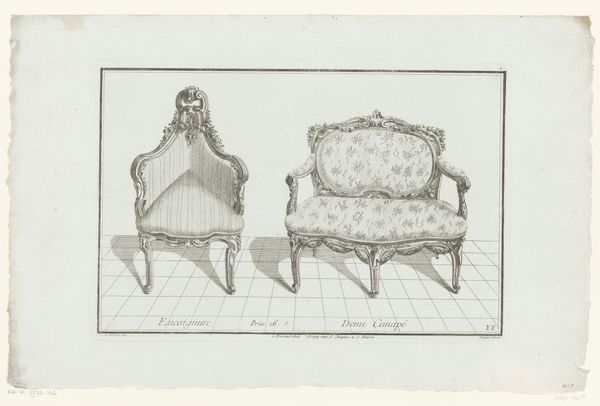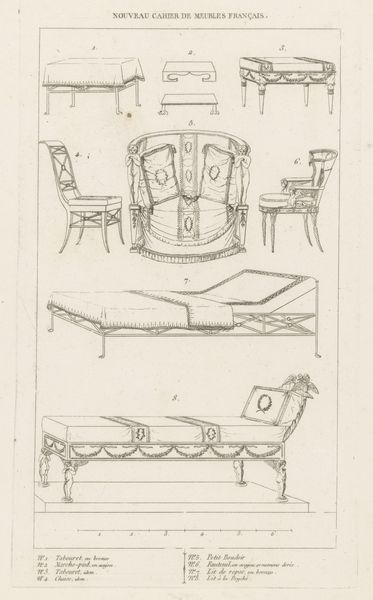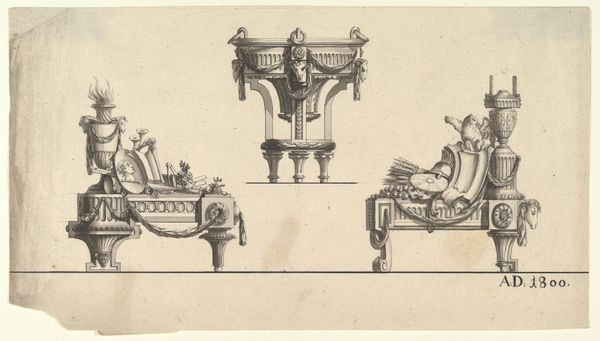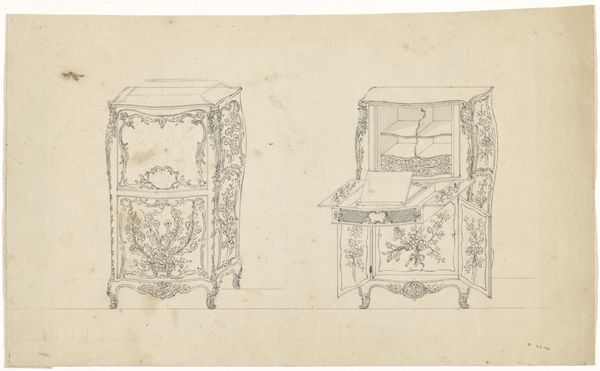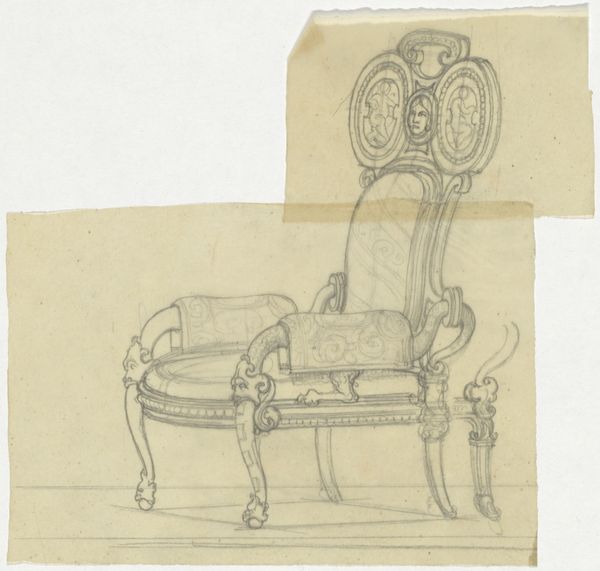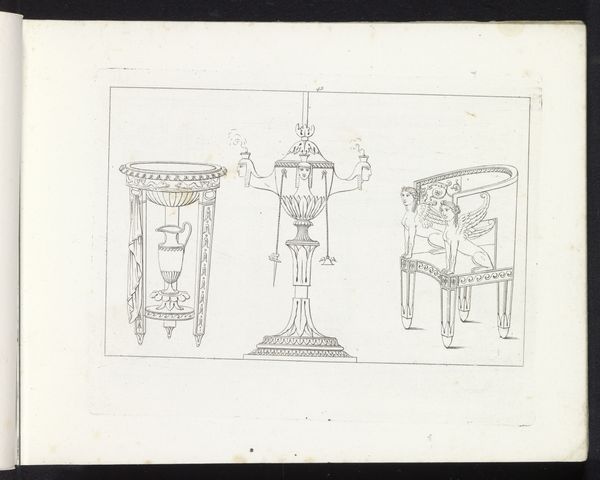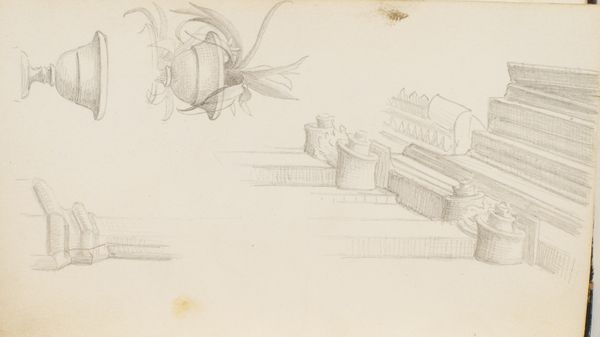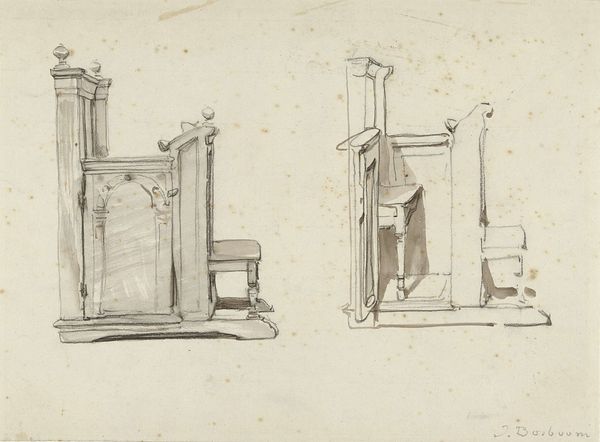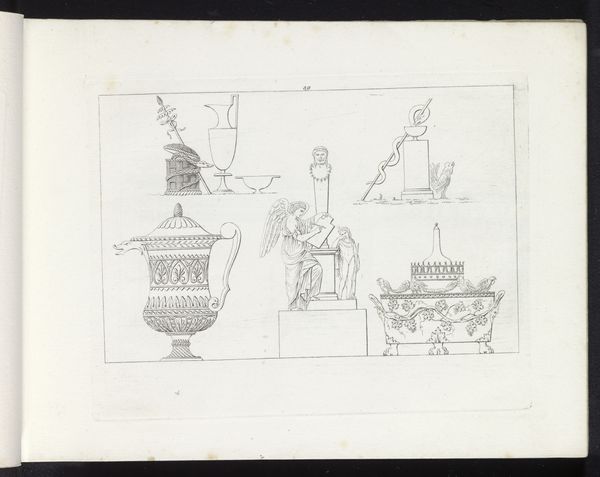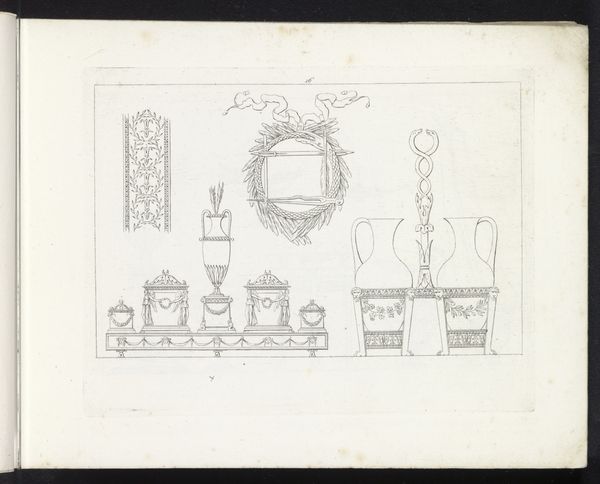
drawing, paper, pencil
#
drawing
#
neoclacissism
#
furniture
#
paper
#
form
#
geometric
#
pencil
#
line
Dimensions: height 176 mm, width 368 mm
Copyright: Rijks Museum: Open Domain
Curator: What a fascinating plate of furniture studies! These 'Vier armstoelen met beklede rug en zitting', dating from around 1820-1823, are the work of Carl Wilhelm Marckwort. It's rendered in pencil on paper, capturing four different armchair designs. Editor: They look remarkably austere, yet elegant. There's a certain coldness to the lines, despite the soft cushioning suggested by the dotted pattern on the upholstery. It feels like a carefully staged power dynamic visualized through… chairs. Curator: Exactly. The Neoclassical period loved to invoke order and rationality through visual forms. Note how Marckwort uses geometry—circles, rectangles, crisp lines—to construct the essence of a chair. And within this formal rigor, there are hints of personalization—notice the eagle emblem in the back of the third chair, or the volute scrolls on the armrests? It reminds me how objects often functioned as indicators of social status in the early 19th century. Editor: I see those elements of potential ornamentation. But, even with the scrolls and the eagle, it comes across as incredibly restricted. They reflect the constraints placed on design as a form of ideological control. Think of how restricted many people’s mobility and lives were back then—is this what it means to sit still? The artist suggests domestic constraints that impact everyone through furniture design. It looks beautiful, yes, but within firm boundaries. Curator: Perhaps. Yet, by creating studies like these, Marckwort wasn’t simply showcasing design; he was solidifying those visual tropes as worthy of artistic merit, reinforcing ideas about domestic aesthetics through careful consideration of line and form. His pencil strokes aren't just sketches but records of visual trends that had the potential to resonate over decades. These were visual icons back then. Editor: I'm curious about this appeal. Perhaps they were desirable objects that served as a vehicle for some members of society. Either way, furniture is never just for "sitting". In art, every object signifies someone’s world; whose world is reflected here, and at what cost to others? Curator: Indeed. An object isn't mute— it echoes, silently but emphatically, aspects of power, design, and influence. Marckwort offers us a frozen, formalized version of a transient moment in social and artistic time. Editor: Ultimately, objects such as these invite us to consider where our own 'sitting' places are found. I wonder where people will look for furniture after considering their personal position with design.
Comments
No comments
Be the first to comment and join the conversation on the ultimate creative platform.

